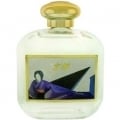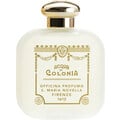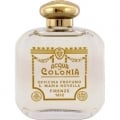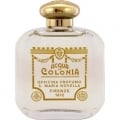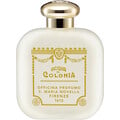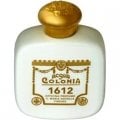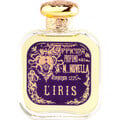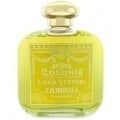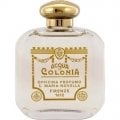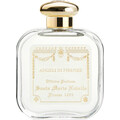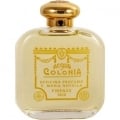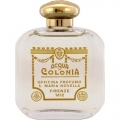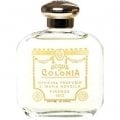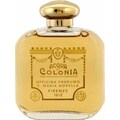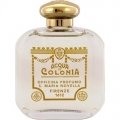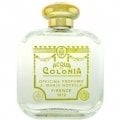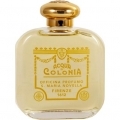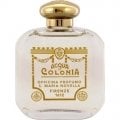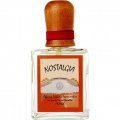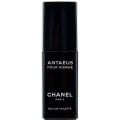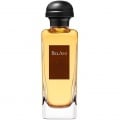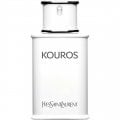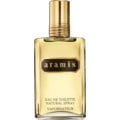12/05/2020

FvSpee
249 Reviews
Translated
Show original

FvSpee
Top Review
33
Neukölln 16: Sicilian Vespers
Technically speaking, the Sicilian Vespers is not a pleasant evening snack or snack, but rather a massacre of the French occupiers in Palermo in 1282, which began on Easter Monday at the time of the Vespers prayer. However, there is no reason for bloody Boadicean concern about this commentary. It is really only about culinary impressions, which this fragrance, although originating from Florence in Tuscany, but named after Sicily, evokes.
In my opinion, Acqua the Sicilia, although it can be recognized as a classic cologne and has a rather traditional pyramid of scents, is quite a distance away from the well-known Farina 4711 standard.
For me, this is first of all because it comes across as very lemony (despite the orange ingredients doubled with neroli and petitgrain). But that shouldn't lead to the assumption that something is sour here and would make your facial features derail. There is also no sign of a light yellow, almost white, cold and crystalline sharpness. The opposite of all this is the case. We are talking about such juicy, dark yellow, fleshy lemons that they have become almost sweet when they are ripe. Whether this is botanically possible, I don't know, in any case it is my olfapoietic impression. If we want to move on a scientifically less fluctuating ground, we can also try the idea of lavishly candied lemons from a Sicilian confectionery, perhaps to be enjoyed with a glass of cold water and a bitter caffè, or to be baked in a Christmas panettone. It is as if the orange notes are not perceived here on their own (in fact nothing here smells of tangerine or orange), but (probably in combination with Sumatran benzoin, to which a "creamy-sweet" aroma is attributed) they only miraculously transform the bergatronics into sweetness and fullness.
The second outstanding characteristic of the fragrance is the impression of shady, wooded, green-tufted, almost misty coolness, as already described by Yatagan in his commentary, which cannot be supplemented any more, however the (business) descendants of the monks of S.M. Novella have mastered to evoke this impression of the fragrance.
Although I like this summery picnic with candied lemons in a shady Sicilian forest very much, the scent of the lemons ultimately gives me top marks. For while I have nothing to remember against the sweet aspect of benzoin here, I bump into the slightly vanilla-creamy note, which the fragrance doesn't only have at its base. Maybe it's time for me to come to the realization that I prefer the cool-crystalline versions of Colognes.
In addition, and I hesitate and tremble to say it, there is another case in which (albeit in an extremely weak version) my high enjoyment of a cologne is denatured by a discreetly resonating, background note of boiled sausage. It is now the fourth or fifth time that I come to this finding (always only with citric colognes) and I cannot explain it to myself. Maybe it is just a genetically determined individual misperception (like colour blindness) with me regarding some ingredient that is often used in colognes, and not a negative quality feature. Therefore readers should not be put off by this aspect. But since I can only describe the fragrance as I perceive it, I want to give credit to sincerity and not sweep this salsiccia misperception under the monastery carpet.
I can remain silent about this highly interesting brand, since many reviewers of SMN fragrances have already written something about it, including myself in my review on Colonia Russa. It remains to be added that the packaging in the beautiful flacons is a bit confusing, because apparently sometimes those are used on which "Acqua di Sicilia" is written on, but sometimes also those on which only "Acqua di Colonia" is written on, these should then be universally usable containers (for several colognes of the company).
In my opinion, Acqua the Sicilia, although it can be recognized as a classic cologne and has a rather traditional pyramid of scents, is quite a distance away from the well-known Farina 4711 standard.
For me, this is first of all because it comes across as very lemony (despite the orange ingredients doubled with neroli and petitgrain). But that shouldn't lead to the assumption that something is sour here and would make your facial features derail. There is also no sign of a light yellow, almost white, cold and crystalline sharpness. The opposite of all this is the case. We are talking about such juicy, dark yellow, fleshy lemons that they have become almost sweet when they are ripe. Whether this is botanically possible, I don't know, in any case it is my olfapoietic impression. If we want to move on a scientifically less fluctuating ground, we can also try the idea of lavishly candied lemons from a Sicilian confectionery, perhaps to be enjoyed with a glass of cold water and a bitter caffè, or to be baked in a Christmas panettone. It is as if the orange notes are not perceived here on their own (in fact nothing here smells of tangerine or orange), but (probably in combination with Sumatran benzoin, to which a "creamy-sweet" aroma is attributed) they only miraculously transform the bergatronics into sweetness and fullness.
The second outstanding characteristic of the fragrance is the impression of shady, wooded, green-tufted, almost misty coolness, as already described by Yatagan in his commentary, which cannot be supplemented any more, however the (business) descendants of the monks of S.M. Novella have mastered to evoke this impression of the fragrance.
Although I like this summery picnic with candied lemons in a shady Sicilian forest very much, the scent of the lemons ultimately gives me top marks. For while I have nothing to remember against the sweet aspect of benzoin here, I bump into the slightly vanilla-creamy note, which the fragrance doesn't only have at its base. Maybe it's time for me to come to the realization that I prefer the cool-crystalline versions of Colognes.
In addition, and I hesitate and tremble to say it, there is another case in which (albeit in an extremely weak version) my high enjoyment of a cologne is denatured by a discreetly resonating, background note of boiled sausage. It is now the fourth or fifth time that I come to this finding (always only with citric colognes) and I cannot explain it to myself. Maybe it is just a genetically determined individual misperception (like colour blindness) with me regarding some ingredient that is often used in colognes, and not a negative quality feature. Therefore readers should not be put off by this aspect. But since I can only describe the fragrance as I perceive it, I want to give credit to sincerity and not sweep this salsiccia misperception under the monastery carpet.
I can remain silent about this highly interesting brand, since many reviewers of SMN fragrances have already written something about it, including myself in my review on Colonia Russa. It remains to be added that the packaging in the beautiful flacons is a bit confusing, because apparently sometimes those are used on which "Acqua di Sicilia" is written on, but sometimes also those on which only "Acqua di Colonia" is written on, these should then be universally usable containers (for several colognes of the company).
25 Comments

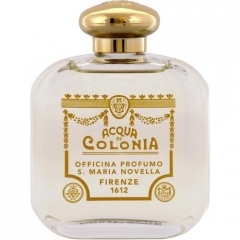


 Top Notes
Top Notes 


 Heart Notes
Heart Notes 

 Base Notes
Base Notes 




 Frankcrummit
Frankcrummit KingPin
KingPin